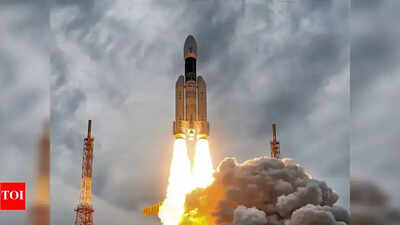Space exploration is on the cusp of a transformative era, with a suite of missions set to launch in 2025 and beyond. These endeavors promise to deepen our understanding of the Moon, Mars, and the vast expanse beyond. Spearheaded by space agencies like NASA, ISRO, ESA, and JAXA, as well as private sector pioneers, these missions will not only propel scientific discovery but also pave the way for human exploration and technological advancements. From crewed lunar orbits to robotic probes exploring distant celestial bodies, here are ten space missions poised to capture our attention in the coming years.

The IM-3 mission plays a crucial role in NASA's Commercial Lunar Payload Services (CLPS) initiative. CLPS is designed to facilitate a sustainable human presence on the Moon. This mission will deploy sophisticated instruments to analyze the lunar surface, including rovers capable of traversing and examining the terrain. Furthermore, IM-3 will test novel landing technologies and autonomous systems critical for upcoming crewed Artemis missions. A successful IM-3 mission will reinforce confidence in commercial partnerships that support lunar exploration.
ESCAPADE comprises two compact satellites, "Blue" and "Gold," orbiting Mars at varying altitudes. This arrangement provides a comprehensive view of how solar wind erodes the Martian atmosphere. This process is vital to understanding Mars' transformation from a potentially habitable planet to the arid desert we observe today. Data gathered by the mission will refine planetary atmosphere models and assist in assessing Mars' past habitability.
NISAR represents a collaborative effort between NASA and ISRO. It's equipped with dual-frequency radar capable of penetrating clouds and darkness, enabling detailed mapping of Earth's surface. The mission will track land deformation caused by seismic and volcanic activity, monitor deforestation, and measure ice sheet dynamics. By providing timely data for disaster response and a deeper understanding of climate change impacts, NISAR is a critical asset for scientists and policymakers worldwide.
Artemis II marks NASA's return to crewed lunar missions after decades. Four astronauts will orbit the Moon aboard the Orion spacecraft, propelled by the powerful Space Launch System (SLS). The 10-day mission will evaluate life support, navigation, and communication systems in the deep space environment. This ensures readiness for the subsequent Artemis III landing mission and represents a significant step towards establishing a long-term human presence on the Moon.
Gaganyaan-2 is a critical part of India's ambitious human spaceflight program. The uncrewed test flights will thoroughly assess the spacecraft's critical systems. This includes environmental controls and emergency procedures. These tests are crucial for ensuring astronaut safety during the planned Gaganyaan-3 mission. Success will position India among the select few nations capable of independently sending humans into space. This is a major milestone in its spacefaring capabilities.
Dragonfly is a distinctive rotorcraft lander designed to traverse Titan's diverse and complex terrain. Titan's dense atmosphere and organic molecules make it a prime location for studying prebiotic chemistry and the potential for life beyond Earth. Dragonfly will analyze surface composition, weather patterns, and chemical processes, providing unprecedented insights into how the building blocks of life might form in environments vastly different from Earth.
JAXA’s MMX mission aims to solve the enigma of Mars’ moons’ origins by collecting samples from Phobos. The mission will also conduct detailed observations of Deimos. Determining whether these moons are captured asteroids or formed from Mars itself will shed light on the history of the Martian system and the early solar system. The sample return represents a complex undertaking. It will provide invaluable material for laboratory analysis on Earth.
ESA’s Space Rider is a reusable, autonomous spaceplane designed to carry payloads for scientific and technological experiments in microgravity. It will facilitate longer-duration studies on biological processes, materials science, and plant growth. This helps researchers understand how space conditions affect various systems. Its reusability reduces costs and enhances access to space for European researchers and industry.
SPHEREx will map the entire sky in infrared light. This provides a wealth of data about the universe’s structure and history. It will investigate the origins of galaxies, measure cosmic inflation’s fingerprints, and explore the mysterious dark energy driving the universe’s accelerated expansion. This mission promises to answer fundamental questions about the cosmos with a new level of precision.
VERITAS will generate high-resolution maps of Venus’ surface using radar to penetrate its dense clouds. By studying Venus’ tectonic activity and volcanic processes, the mission seeks to explain why Venus evolved so differently from Earth despite their similar size and composition. VERITAS will also help assess Venus’ potential for past habitability and provide context for comparative planetology.
These missions represent the cutting edge of space exploration. They combine human spaceflight, robotic explorers, and Earth observation to expand our knowledge of the solar system and our home planet. As they launch and progress over the next decade, they will inspire new discoveries and redefine humanity’s place in the cosmos.
Newer articles
 Greg Chappell Hails Rishabh Pant's Revolutionary Impact on Cricket
Greg Chappell Hails Rishabh Pant's Revolutionary Impact on Cricket
 Smith Targets Second Test Return After Baseball Cage Recovery in New York
Smith Targets Second Test Return After Baseball Cage Recovery in New York
 Rishabh Pant's Somersault Celebration Deemed 'Unnecessary' by Doctor Who Oversaw His Recovery From Near-Fatal Crash
Rishabh Pant's Somersault Celebration Deemed 'Unnecessary' by Doctor Who Oversaw His Recovery From Near-Fatal Crash
 Gavaskar Calls for Kuldeep Yadav's Inclusion in 2nd Test Amid Bumrah Fitness Concerns
Gavaskar Calls for Kuldeep Yadav's Inclusion in 2nd Test Amid Bumrah Fitness Concerns
 Rishabh Pant's Composed Reply Dismisses Harry Brook's Sledge in Edgbaston Test: Key Partnership Boosts India
Rishabh Pant's Composed Reply Dismisses Harry Brook's Sledge in Edgbaston Test: Key Partnership Boosts India
 Samsung Unveils Galaxy A35 5G and A55 5G Prices, Availability
Samsung Unveils Galaxy A35 5G and A55 5G Prices, Availability
 Harshit Rana Released: Indian Pacer Exits Squad Before Second England Test in Birmingham
Harshit Rana Released: Indian Pacer Exits Squad Before Second England Test in Birmingham
 Bangladesh Test Captain Najmul Hossain Resigns After Sri Lanka Defeat
Bangladesh Test Captain Najmul Hossain Resigns After Sri Lanka Defeat
 Mirabai Chanu: Weightlifting Demands Constant Mental Focus, Even During Family Time
Mirabai Chanu: Weightlifting Demands Constant Mental Focus, Even During Family Time
 'Manjummel Boys' Star Soubin Shahir Denies Arrest in Film Finance Dispute: Claims of Misleading Accounting Spark Police Probe
'Manjummel Boys' Star Soubin Shahir Denies Arrest in Film Finance Dispute: Claims of Misleading Accounting Spark Police Probe